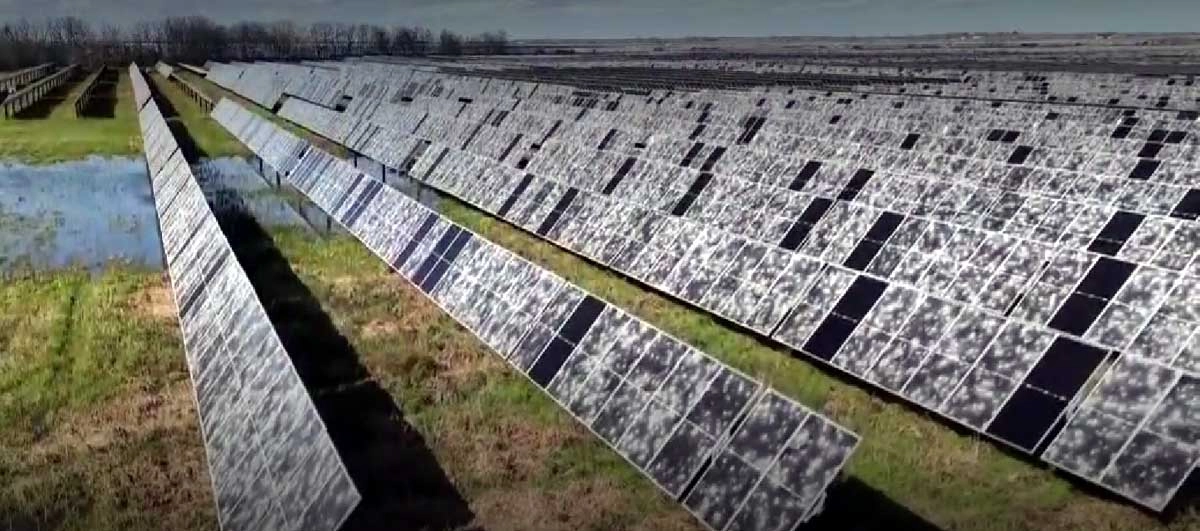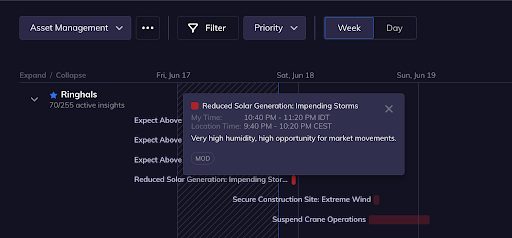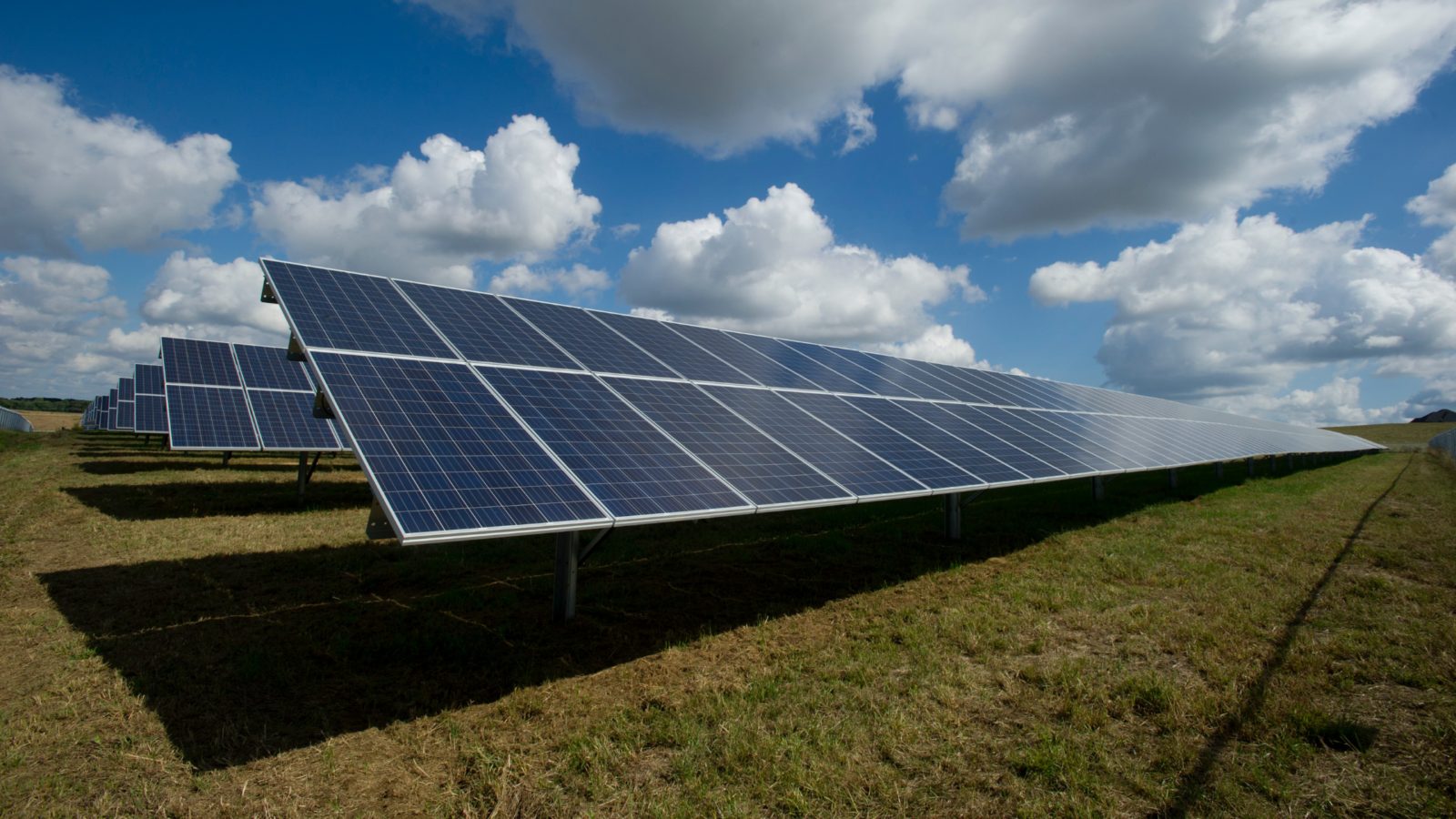TL;DR:
- Weather conditions significantly impact solar operations, wind energy, and hydropower, affecting energy production and infrastructure resilience.
- Climate change is causing more extreme weather patterns, leading to increased insurance costs for renewable energy operators.
- Adapting solar operations to changing weather extremes is crucial for optimizing energy production and minimizing risks.
- Effective strategies for enhancing solar operations include regular maintenance, predictive analytics, and real-time monitoring.
- Accurately predicting energy generation across renewable sources is essential for optimizing efficiency and reducing waste.
Weather considerations are essential for the efficiency and reliability of solar operations, as solar energy production is heavily reliant on sunlight. Variations in weather conditions, such as cloud cover, temperature, and seasonal changes, can significantly impact energy output. For instance, solar irradiance—the amount of solar energy received—can be diminished by clouds and shading, while high temperatures can reduce the efficiency of solar panels. Understanding local weather patterns is crucial for optimizing the design and placement of solar farms to maximize energy capture.
The Cost of Changing Weather On Solar Operations
Weather conditions significantly impact renewable energy, affecting solar operations, wind energy, and hydropower by influencing energy production, efficiency, and infrastructure resilience through factors like cloud cover, wind speed, and water availability.
Solar Operations:
- Cloud Cover: Clouds can reduce solar energy production by up to 25% on partly cloudy days, as they scatter and absorb sunlight, diminishing solar operations’ exposure to solar irradiance.
- High Humidity and Heat: These conditions can degrade solar panels over time, with water droplets refracting sunlight away from the panels. Efficiency decreases by about 1% for every degree rise above 77 degrees Fahrenheit.
- Snow Accumulation: Snow can add stress to solar panels when accumulation is significant, though light snow often slides off pitched panels.
- Lightning and Thunderstorms: These can cause production drops and damage to panels or electrical systems, affecting the reliability of solar operations.
- Hailstorms: Hail poses a risk of physical damage to sensitive panels, leading to costly repairs and downtime.
- Flooding: Flooding may require disconnecting systems from the grid to prevent damage, impacting efficient solar operations.
Wind Energy:
- Wind Speed Variability: Inconsistent wind speeds can lead to fluctuating power output, challenging grid stability and efficiency in wind energy production.
- Storm Damage: High winds and storms can damage wind turbines, leading to operational downtime and increased maintenance costs.
Hydropower:
- Drought: Prolonged dry periods reduce water flow, limiting the capacity of hydropower plants to generate electricity and affecting overall energy supply.
- Flooding: Excessive water flow from flooding can damage infrastructure and necessitate operational adjustments to manage water levels and protect facilities.
Climate Change’s Impact on Weather and Insurance for Renewable Energy
Climate change is causing more extreme weather patterns, leading to hotter days, increased snowfall, more intense lightning storms, and larger hail. This increased volatility has resulted in insurance premiums for renewable energy operators rising by over 400% since 2019. (SEIA.org).
Let’s look at a specific large-scale example:
As one of the sunniest states in the country, Texas is home to over 11 gigawatts of installed solar capacity as of Q2 2021. It also experiences some of the nation’s most severe hailstorms, with the infamous “Hail Alley” stretching from southwestern Texas up to South Dakota. Hailstorms in Texas peak between March and May each year, often causing significant damage to solar operations.

Solar panels can be pricey.
According to Forbes, the average cost of solar panels in the United States is $18,000, and prices can go up to $30,000 depending on location and building size.
In March 2024, a powerful hailstorm struck the 350 MW Fighting Jays Solar Farm in Fort Bend County, Texas, causing severe damage to the entire farm.
Solar panels are the vulnerable to extreme weather.
According to IER, this storm shattered many solar panels, leading to remediation costs expected to reach hundreds of millions of dollars, potentially exceeding 50% of the initial construction costs.
The financial impact of such storms is significant. For instance, in 2019, the Midway Solar Project near Midland, Texas, experienced significant hail damage to over 58% of its modules, resulting in an insurance claim of approximately $70 million. Hailstorms are becoming more frequent and intense, with larger hailstones posing a serious threat to solar operations. In April 2021, Texas recorded its largest hailstone in Hondo, measuring 6.4 inches in diameter.
Since 2019, Texas has rapidly increased its solar capacity, nearly doubling its capacity from 2019 to 2020 and continuing that trend into 2021. By September 2024, Texas will have the most solar power installed on its power grid compared to any other state in the U.S.
Michael Cosgrave, a risk manager with insurance firm Renewable Guard, highlighted the financial impact of these events:
“We saw an $80 million hail loss in Texas in 2019, damaging 13,000 solar panels at a 160 MW solar farm, which really had a lot of underwriters and carriers taking notice. Historically, you would have seen a minimum $100,000 deductible or 5% of the physical damage limit. Over a few years, that grew to $250,000 and 5%, and I’ve seen $1,000,000 and 15% in Texas, which as far as I know is unprecedented.”
For more information, please explore the following resources:
- Institute for Energy Research: Offers insights into the effects of climate change on renewable energy infrastructure.
- Texas Solar Power Association: Provides updates and data on solar power installations and trends in Texas.
- Wood Mackenzie Data & Analytics: Delivers analysis on energy trends, including the impact of extreme weather on insurance costs.
Adapting Your Solar Operations to Changing Weather Extremes
Adapting solar operations to increasingly extreme weather conditions is essential in the face of climate change. Understanding weather patterns, from historical trends to real-time monitoring and predictive analytics, is vital for optimizing solar energy production and minimizing risks. Historical data analysis allows solar operators to design systems better suited to withstand extreme weather events like hail and heavy snowfall. Real-time monitoring enables immediate operational adjustments to ensure safety and efficiency, while predictive analytics help anticipate disruptions, allowing for proactive scheduling of maintenance and energy production adjustments.
Strategies for Enhancing Solar Operations
Effective strategies for solar operations include regular panel maintenance to prevent damage and ensure optimal performance. Keeping panels clean from debris and snow enhances their efficiency. Predictive analytics, integrated into solar operations, offer valuable insights for adapting to changing weather conditions, helping operators adjust production schedules and prepare for potential disruptions. By leveraging these strategies, solar operations can increase resilience to climate change and continue to provide sustainable energy solutions.
Predicting Energy Generation Across Renewable Sources
Accurately predicting energy generation is essential for optimizing solar operations, wind energy, and hydropower. Each type of renewable energy presents unique challenges in balancing energy load and demand, requiring advanced forecasting techniques and predictive analytics to enhance efficiency and reduce waste.
- Solar Operations: In Japan, the solar market exceeds 60 GW, but 90% of sites generate less than 2 MW, making them small-scale installations like individual homes. This distribution makes it difficult for companies to predict solar energy load versus demand, often leading to energy and financial inefficiencies.
- Wind Energy: Wind speed and direction variability poses challenges in forecasting energy generation. Accurate models are crucial for optimizing turbine efficiency and ensuring a consistent energy supply.
- Hydropower: Predicting hydropower output involves managing water flow influenced by rainfall, snowmelt, and reservoir levels. Advanced predictive models help balance electricity generation with water resource management.

Improving Algorithms with Weather Data
Weather intelligence isn’t just useful for individual solar operators.
A reliable Weather API is also necessary for solar tracking companies, solutions that adjust the direction of panels based on the sun’s direction.
These organizations typically rely on a combination of weather data sources, including ground-based methods (e.g. anemometers), to make recommendations on panel tilt. However, these data sources aren’t able to provide a comprehensive historical, real-time, and forecasted view of all types of weather extreme weather.
Protecting Your Solar Farm with Tomorrow.io
Securing your assets and keeping your crews safe starts with knowing when hailstorms are on the way. Tomorrow.io’s advanced alerts give your team the time they need to start stowing panels before storms arrive.
With actionable data on hand, you can better optimize your operations to take advantage of favorable conditions and mitigate dangerous weather risks. While you can’t stop major storms from forming, you can make sure your solar farm is better prepared with Tomorrow.io.

















